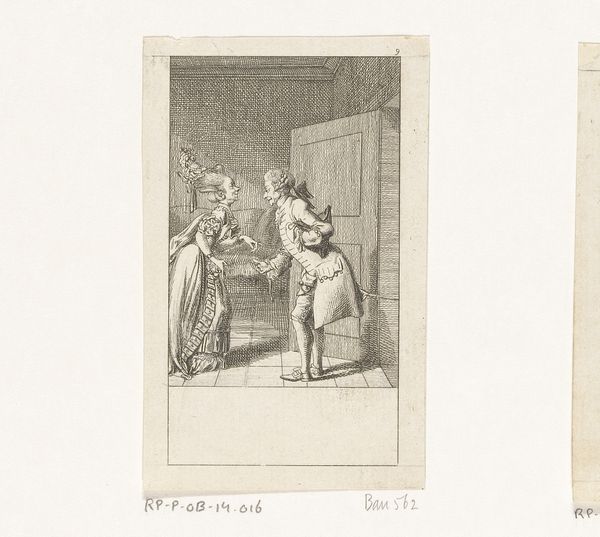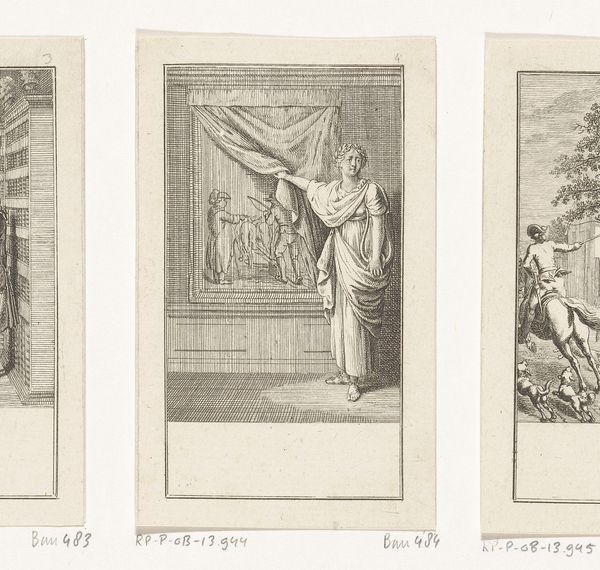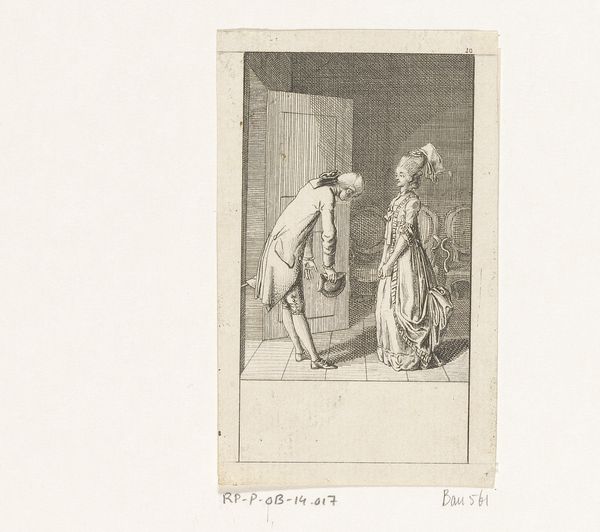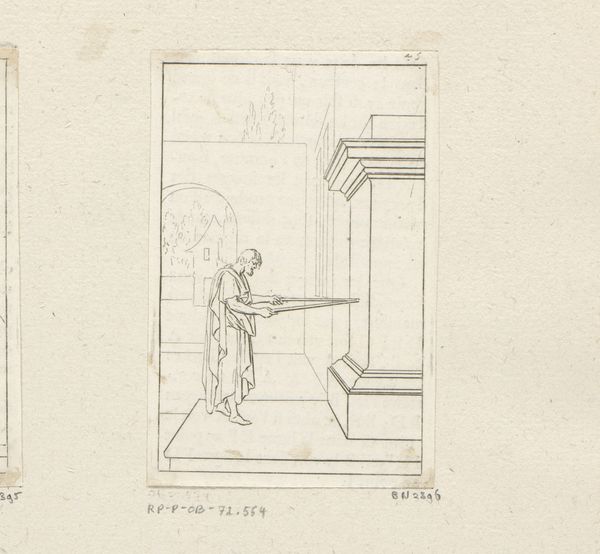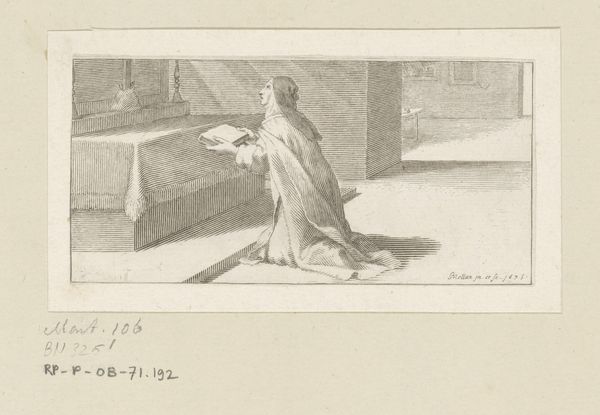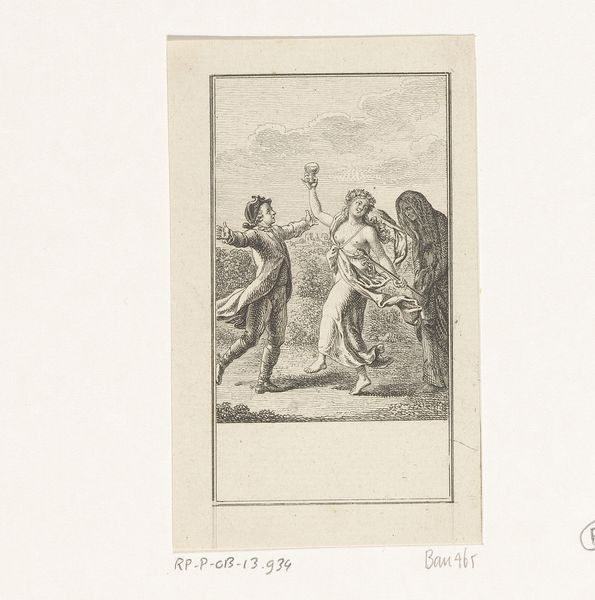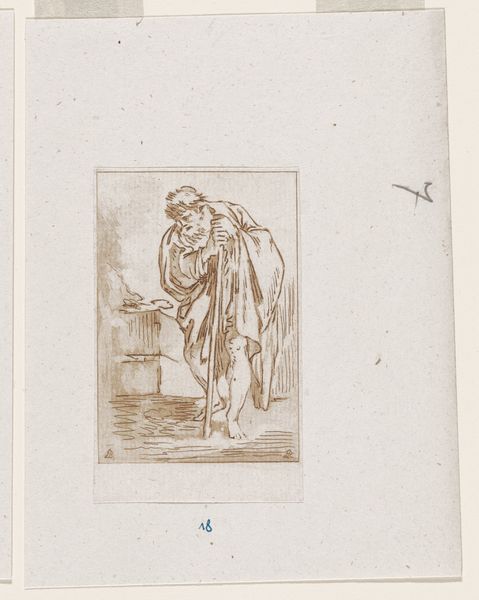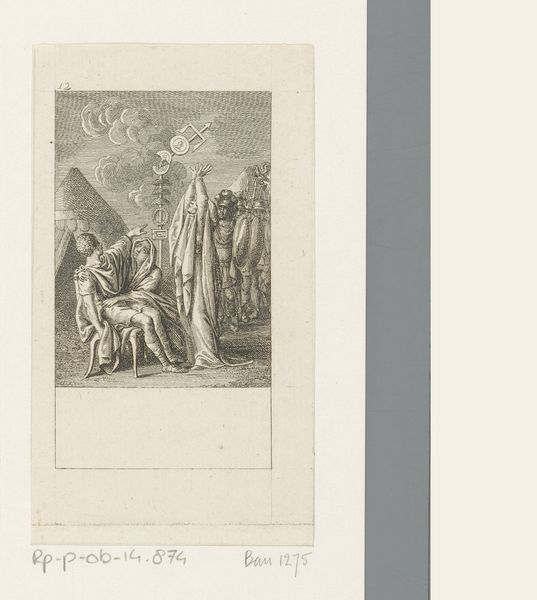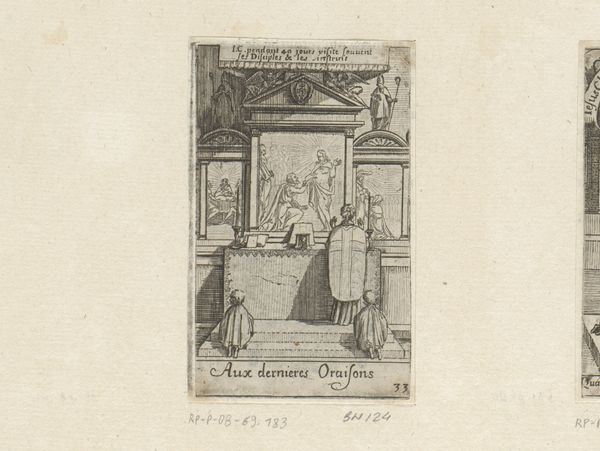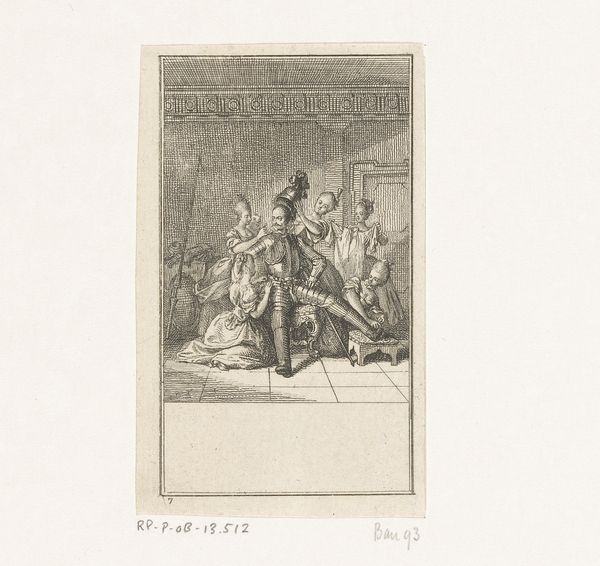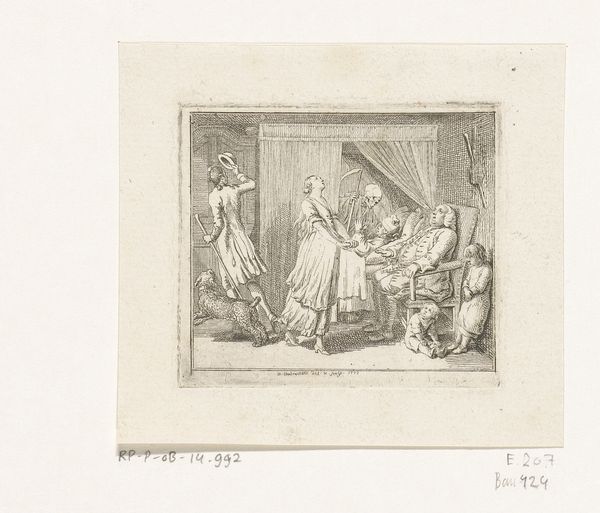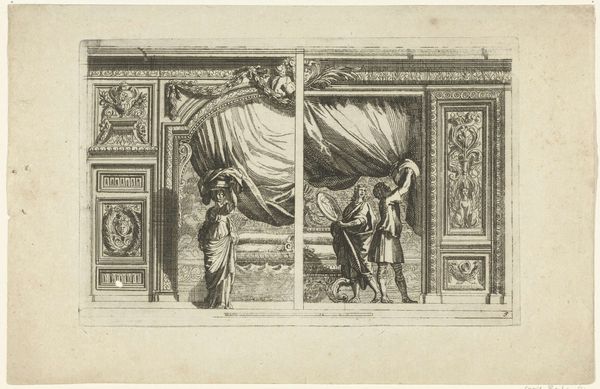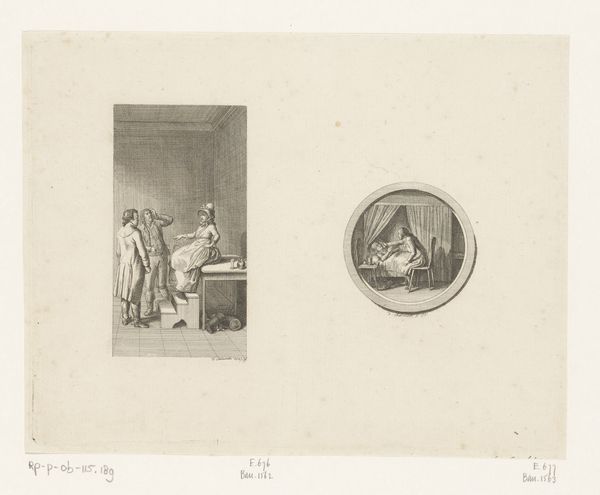
print, etching
#
portrait
#
neoclacissism
# print
#
etching
#
genre-painting
#
history-painting
Dimensions: height 105 mm, width 65 mm
Copyright: Rijks Museum: Open Domain
Curator: Daniel Nikolaus Chodowiecki created this etching, "Erato onthult een schilderij," around 1778. It’s currently held in the Rijksmuseum collection. Editor: It’s rather striking. Even in this small scale, the classical figure dominates; she seems to literally unveil not just a painting but a scene. The mood is decidedly formal, but with a curious sense of presentation. Curator: Chodowiecki, working in the late 18th century, straddled the line between high art and the burgeoning print market. Etchings like this one were produced in multiples and distributed widely, meaning art became accessible to a wider audience than ever before. The lines are so clean and the image appears precise – but to reproduce such detail with an etching needle is still quite laborious and would have been a painstaking task. Editor: Right. Looking closer, that classical figure, Erato, is one of the Muses. In ancient Greek myth she embodies lyric poetry. Here, she seems to be presiding over history itself as presented in the unveiled painting; she guides our viewing. Given her garland and toga, she's both of and distinct from the soldiers, so what might they symbolise, caught up as they are in a fray of history? Curator: I see a direct line here between Neoclassicism's emphasis on order and clarity and the social changes brewing at the time. Think about it: accessible imagery alongside a rising middle class seeking refinement – it reflects shifting economic structures giving rise to new modes of artistic consumption and production. It’s not merely a revival of classical forms, but a response to the material conditions of 18th-century life. Editor: That’s interesting, thinking about the distribution and material implications alongside the clear, purposeful iconography. Perhaps those sharp lines even suggest clarity and historical fact being actively shaped. Curator: Indeed. Examining art in the context of its creation—the labor involved, the materials used, and how it was consumed, helps us break down artificial distinctions between "high" and "low" art. Editor: And I would add, understanding the layered symbolism grants us insights into the cultural memory and values of that era. Erato showing a violent military episode; maybe beauty needs war but certainly peace and art interprets it. Curator: A fascinating artwork, and hopefully our brief conversation helps clarify the multiple layers of meaning. Editor: Definitely, a worthy moment for both consideration and appreciation.
Comments
No comments
Be the first to comment and join the conversation on the ultimate creative platform.
